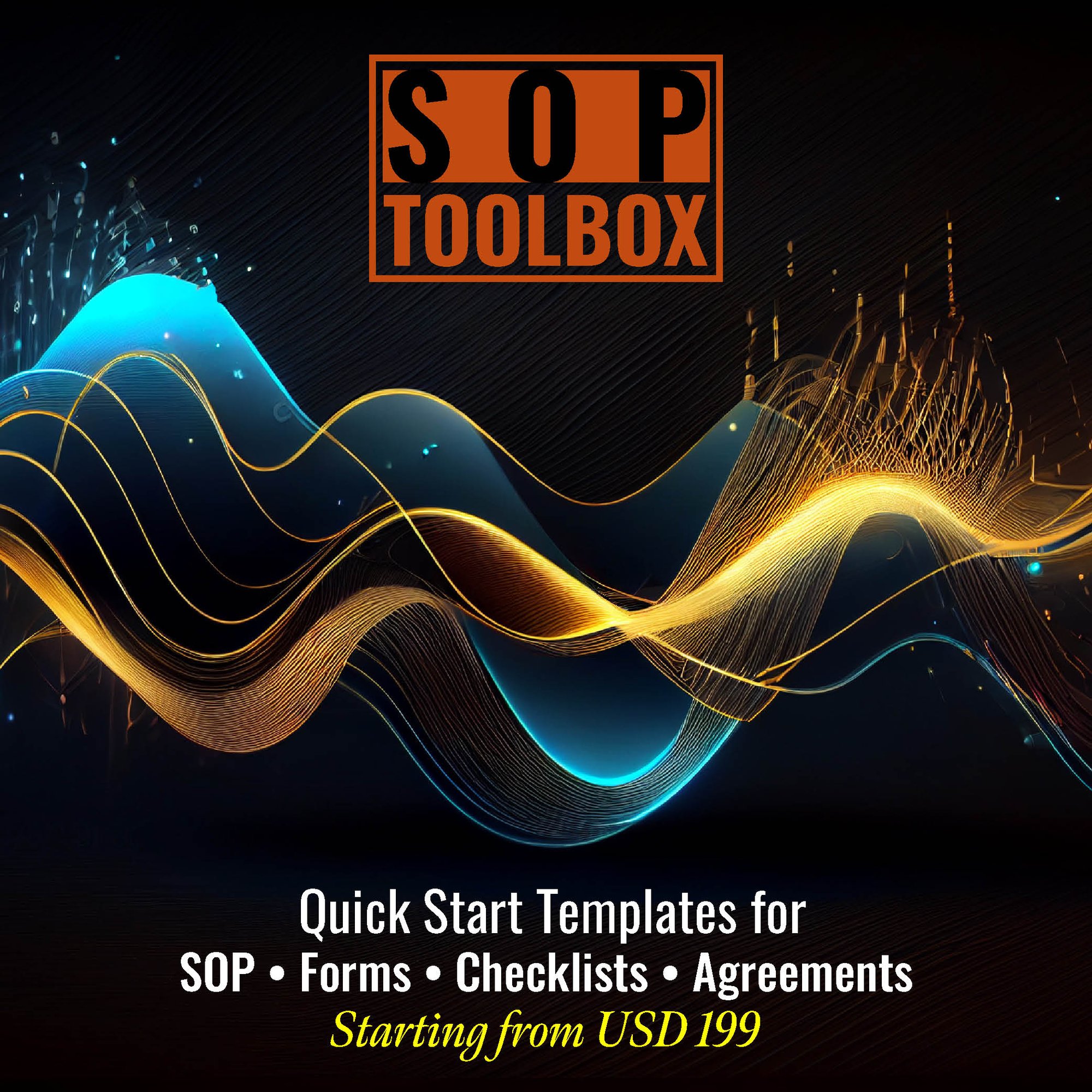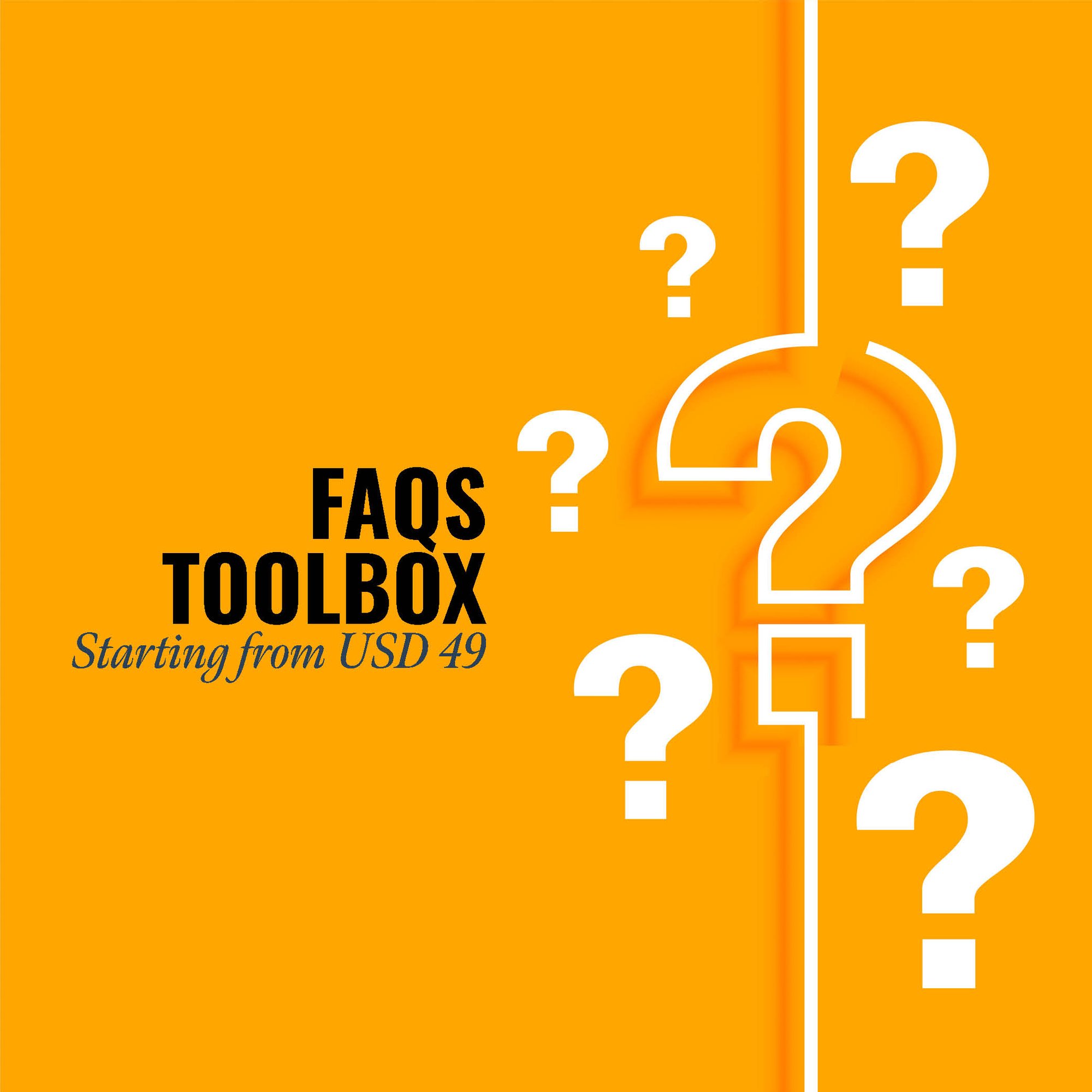The "SOP Manual for Data Processing, Hosting, and Related Services" offers numerous advantages in the rapidly evolving field of information technology. Firstly, it provides a structured guide for standardized operating procedures (SOPs), ensuring consistency and reliability in data processing and hosting activities. This consistency contributes to the efficiency and quality of services.
Secondly, the SOP manual becomes a crucial resource for employee training, fostering a skilled workforce adept at handling diverse data processing tasks and ensuring adherence to security protocols. It supports the development of a culture focused on data integrity and privacy.
Moreover, the manual aids in compliance with data protection regulations and industry standards, reducing the risk of security breaches and legal complications. It serves as a dynamic document, adapting to technological advancements and evolving cybersecurity threats, thereby enhancing the overall resilience and competitiveness of data processing and hosting services.
In essence, the "SOP Manual for Data Processing, Hosting, and Related Services" advances operational excellence, data security, and adaptability in the ever-expanding realm of information services.
CLICK HERE to download the List of SOPs Document in PDF format. Please share this document with your clients, colleagues and senior officers.
Top 50 Standard Operating Procedures (SOPs) for Data Processing, Hosting and Related Services
SOP-423-001: Standard Operating Procedure for Data Security Protocols
SOP-423-002: Standard Operating Procedure for Access Control Policies
SOP-423-003: Standard Operating Procedure for Data Encryption Procedures
SOP-423-004: Standard Operating Procedure for Backup and Recovery
SOP-423-005: Standard Operating Procedure for Incident Response Plan
SOP-423-006: Standard Operating Procedure for Server Maintenance
SOP-423-007: Standard Operating Procedure for Software Patching
SOP-423-008: Standard Operating Procedure for Network Monitoring
SOP-423-009: Standard Operating Procedure for Client Onboarding
SOP-423-010: Standard Operating Procedure for Service Level Agreements (SLAs)

SOP-423-011: Standard Operating Procedure for Data Transfer Protocols
SOP-423-012: Standard Operating Procedure for Incident Reporting for Clients
SOP-423-013: Standard Operating Procedure for Compliance Audits
SOP-423-014: Standard Operating Procedure for Disaster Recovery Testing
SOP-423-015: Standard Operating Procedure for Change Management Procedures
SOP-423-016: Standard Operating Procedure for Client Data Migration
SOP-423-017: Standard Operating Procedure for Performance Monitoring
SOP-423-018: Standard Operating Procedure for Vendor Management
SOP-423-019: Standard Operating Procedure for Data Retention Policies
SOP-423-020: Standard Operating Procedure for Client Offboarding
SOP-423-021: Standard Operating Procedure for Employee Training on Security Protocols
SOP-423-022: Standard Operating Procedure for Data Privacy and Compliance Training
SOP-423-023: Standard Operating Procedure for Remote Access Policies
SOP-423-024: Standard Operating Procedure for Log Management and Analysis
SOP-423-025: Standard Operating Procedure for Internal and External Communication Protocols
SOP-423-026: Standard Operating Procedure for Incident Post-Mortem Analysis
SOP-423-027: Standard Operating Procedure for Continuous Monitoring Tools
SOP-423-028: Standard Operating Procedure for Vulnerability Scanning
SOP-423-029: Standard Operating Procedure for Access Termination Procedures
SOP-423-030: Standard Operating Procedure for Incident Communication Templates

SOP-423-031: Standard Operating Procedure for Cloud Service Integration
SOP-423-032: Standard Operating Procedure for Software License Management
SOP-423-033: Standard Operating Procedure for Server Virtualization Best Practices
SOP-423-034: Standard Operating Procedure for Data Center Physical Security
SOP-423-035: Standard Operating Procedure for User Authentication Protocols
SOP-423-036: Standard Operating Procedure for Patch Rollback Procedures
SOP-423-037: Standard Operating Procedure for Client Communication during Maintenance
SOP-423-038: Standard Operating Procedure for Incident Documentation and Reporting
SOP-423-039: Standard Operating Procedure for Remote Desktop Protocol (RDP) Security
SOP-423-040: Standard Operating Procedure for Network Segmentation
SOP-423-042: Standard Operating Procedure for Security Incident Response Team (SIRT)
SOP-423-043: Standard Operating Procedure for Data Destruction Protocols
SOP-423-044: Standard Operating Procedure for Remote Monitoring and Management (RMM)
SOP-423-045: Standard Operating Procedure for Disaster Recovery Site Activation
SOP-423-046: Standard Operating Procedure for Change Control Board (CCB) Procedures
SOP-423-047: Standard Operating Procedure for Compliance Reporting
SOP-423-048: Standard Operating Procedure for Data Classification and Handling
SOP-423-049: Standard Operating Procedure for Secure File Transfer Protocols
SOP-423-050: Standard Operating Procedure for Security Awareness and Training Program
SOP ToolBox: If you are reading these lines, I am sure you are looking for Standard Operating Procedure guidelines or SOPs itself. In both the cases, searching in internet will not be yielding any great help. Because no company shares their SOP Development Process and certainly don’t share their SOP Documents. The best way to develop an SOP is creating one for yourself. At Fhyzics, we write SOPs day-in and day-out for companies across the globe including some of the Fortune 500 organisations. Our charge ranges from USD 5000 to USD 50000 depending upon the number of processes to be covered. Certainly, this is not affordable to small and mid-size organisations. Hence, we decided to create this SOP ToolBox to disseminate our 8-Step SOP Development Life-Cycle and best practices at an unbelievably low price.
I always say, writing an SOP is somewhere between art and science. So far you may be clueless on where to start and how to progress on an SOP? This will not be the case after you diligently go through this SOP ToolBox. We have summarised all our secrets here to get you started and to deliver a stunning SOP to your management.
Data Services are mostly software services. Data is stored in multiple system and different mechanisms. When working with multiple data from various streams it is important to maintain integrity and win the confidence of the customer.
1. Standard Operating Procedures (SOP) Manual for Accounts Department
2. Standard Operating Procedures (SOP) Manual for Finance Department
3. Standard Operating Procedures (SOP) Manual for Customer Service
4. Standard Operating Procedures (SOP) Manual for CRM Department
5. Standard Operating Procedures (SOP) Manual for Credit Department
6. Standard Operating Procedures (SOP) Manual for Treasury Department
7. Standard Operating Procedures (SOP) Manual for Human Resources (HR) Department
8. Standard Operating Procedures (SOP) Manual for Training Department
9. Standard Operating Procedures (SOP) Manual for Learning & Development Department
10. Standard Operating Procedures (SOP) Manual for Administration Department
11. Standard Operating Procedures (SOP) Manual for Front Office
12. Standard Operating Procedures (SOP) Manual for House Keeping
13. Standard Operating Procedures (SOP) Manual for Safety Department
14. Standard Operating Procedures (SOP) Manual for Security Department
15. Standard Operating Procedures (SOP) Manual for Facilities Management Department
16. Standard Operating Procedures (SOP) Manual for Vigilance Department
17. Standard Operating Procedures (SOP) Manual for Legal Department
18. Standard Operating Procedures (SOP) Manual for Information Technology (IT) Department
19. Standard Operating Procedures (SOP) Manual for Sales & Marketing Department
20. Standard Operating Procedures (SOP) Manual for Design & Engineering
21. Standard Operating Procedures (SOP) Manual for Procurement Department
22. Standard Operating Procedures (SOP) Manual for Production
23. Standard Operating Procedures (SOP) Manual for SRM Department
24. Standard Operating Procedures (SOP) Manual for Supply Chain Department
25. Standard Operating Procedures (SOP) Manual for Warehouse
26. Standard Operating Procedures (SOP) Manual for New Product Development Department
27. Standard Operating Procedures (SOP) Manual for Research and Development
28. Standard Operating Procedures (SOP) Manual for Quality Department
29. Standard Operating Procedures (SOP) Manual for Calibration Department
30. Standard Operating Procedures (SOP) Manual for Maintenance Department
-
Data sourceabstraction
-
Aggregation of dataproviders
-
Reuse (generic, interoperable, flexible consumptionpatterns)
-
Alignment with logical data models
-
Support for multiple serviceversions
-
Provide value addedfeatures
-
Single point ofinteraction
Physical data from the customer is abstracted from the sources. This enables to perform data structure changes according to the need. Data persistence mechanisms and Data Exchange Protocols are followed. In order to properly form a business entity data providers must be allowed to use one or more data sources. Structured, semi structures and unstructured data is combined by the data service provider.
A variety of information and data is combined and a target messages are provided to the customer. Stored data acts as reusable data. This enables the conduct of different operations based on the data. It is made sure that the collected and synthesized data is in line with logical data model entities. It is made possible by observing the patterns and retaining the consistency of data. The various data attribute behaviour is studied.
Data caching, filtering and subscription management are also done by The Data Processing, Hosting and Related Services Industry. The consumption of data services needs to done in the following three perspectives. Computing Environment, Transport Protocol and Message Exchange Pattern.
- Hadoop
- HPCC
- Apache Storm
- Qubole
- Cassandra
- Statwing
- CouchDB
- Pentaho
- Flink
- Cloudera
- Numerator (Chicago, USA)
https://www.numerator.com/ - Cloudera (California, USA)
https://www.cloudera.com/ - Splunk Technology (San Fransisco, USA)
https://www.splunk.com/
- https://analyticsindiamag.com/
- https://kdnuggets.com/publications/journals-magazines.html
- https://analyticsinsight.net/magazine/
- https://datascience.codata.org/
Our SOP Templates’ clients are from the following States and Countries:
Alabama, Alaska, Arizona, Arkansas, California, Colorado, Connecticut, Delaware, Florida, Georgia, Hawaii, Idaho, Illinois, Indiana, Iowa, Kansas, Kentucky, Louisiana, Maine, Maryland, Massachusetts, Michigan, Minnesota, Mississippi, Missouri, Montana, Nebraska, Nevada, New Hampshire, New Jersey, New Mexico, New York, North Carolina, North Dakota, Ohio, Oklahoma, Oregon, Pennsylvania, Rhode Island, South Carolina, South Dakota, Tennessee, Texas, Utah, Vermont, Virginia, Washington, West Virginia, Wisconsin, Wyoming.
Afghanistan, Albania, Algeria, Andorra, Angola, Antigua and Barbuda, Argentina, Armenia, Australia, Austria, Azerbaijan, Bahamas, Bahrain, Bangladesh, Barbados, Belarus, Belgium, Belize, Benin, Bhutan, Bolivia, Bosnia and Herzegovina, Botswana, Brazil, Brunei Darussalam, Bulgaria, Burkina Faso, Burundi, Cabo Verde, Cambodia, Cameroon, Canada, Central African Republic, Chad, Chile, China, Colombia, Comoros, Congo (Republic of the), Costa Rica, Croatia, Cuba, Cyprus, Czech Republic (Czechia), Democratic People’s Republic of Korea (North Korea), Democratic Republic of the Congo, Denmark, Djibouti, Dominica, Dominican Republic, Ecuador, Egypt, El Salvador, Equatorial Guinea, Eritrea, Estonia, Eswatini, Ethiopia, Fiji, Finland, France, Gabon, Gambia, Georgia, Germany, Ghana, Greece, Grenada, Guatemala, Guinea, Guinea-Bissau, Guyana, Haiti, Honduras, Hungary, Iceland, India, Indonesia, Iran, Iraq, Ireland, Israel, Italy, Jamaica, Japan, Jordan, Kazakhstan,Kenya, Kiribati, Kuwait, Kyrgyzstan, Lao People’s Democratic Republic (Laos), Latvia, Lebanon, Lesotho, Liberia, Libya, Liechtenstein, Lithuania, Luxembourg, Madagascar, Malawi, Malaysia, Maldives, Mali, Malta, Marshall Islands, Mauritania, Mauritius, Mexico, Micronesia (Federated States of), Moldova, Monaco, Mongolia, Montenegro, Morocco, Mozambique, Myanmar (Burma), Namibia, Nauru, Nepal, Netherlands, New Zealand, Nicaragua, Niger, Nigeria, North Macedonia (formerly Macedonia), Norway, Oman, Pakistan, Palau, Panama, Papua New Guinea, Paraguay, Peru, Philippines, Poland, Portugal, Qatar, Republic of Korea (South Korea), Republic of the Congo, Romania, Russian Federation (Russia), Rwanda, Saint Kitts and Nevis, Saint Lucia, Saint Vincent and the Grenadines, Samoa, San Marino, Sao Tome and Principe, Saudi Arabia, Senegal, Serbia, Seychelles, Sierra Leone, Singapore, Slovakia, Slovenia, Solomon Islands, Somalia, South Africa, South Sudan, Spain, Sri Lanka, Sudan, Suriname, Sweden, Switzerland, Syrian Arab Republic (Syria), Tajikistan, Thailand, Timor-Leste, Togo, Tonga, Trinidad and Tobago, Tunisia, Turkey, Turkmenistan, Tuvalu, Uganda, Ukraine, United Arab Emirates, United Kingdom of Great Britain and Northern Ireland, United Republic of Tanzania, United States of America, Uruguay, Uzbekistan, Vanuatu, Venezuela, Viet Nam, Yemen, Zambia, Zimbabwe.
Fhyzics supports organisations in developing the following documentations:
Standard Operating Procedures (SOPs), Work Instructions, Policies and Procedures, Process Flow Diagrams, Job Descriptions, Training Manuals, Employee Handbooks, Compliance Guidelines, Quality Assurance Manuals, Health and Safety Procedures, Risk Management Plans, Business Continuity Plans, Internal Audit Procedures, Incident Reporting Forms, Performance Management Guidelines, Change Management Procedures, Vendor Management Guidelines, Customer Service Protocols, IT Security Policies, IT Support Documentation, Disaster Recovery Plans, Operational Checklists, Data Management Policies, Confidentiality Agreements, Non-Disclosure Agreements, Employee Onboarding Procedures, Employee Exit Procedures, Performance Appraisal Forms, Employee Code of Conduct, Conflict Resolution Procedures, Product Development SOPs, Supply Chain Management Guidelines, Procurement Guidelines, Inventory Management SOPs, Shipping and Receiving Procedures, Production Scheduling SOPs, Maintenance Procedures, Equipment Calibration Documents, Environmental Compliance Documentation, Sustainability Policies, Customer Feedback Forms, Marketing Strategies, Advertising Guidelines, Brand Management Guidelines, Product Packaging SOPs, Laboratory Testing Procedures, Regulatory Compliance Documentation, Tax and Accounting Procedures, Contract Management Procedures, Legal Compliance Guidelines, Financial Reporting Procedures, Budgeting Procedures, Internal Control Procedures, Fraud Prevention Policies, Asset Management Guidelines, Purchase Order Procedures, Sales and Distribution Guidelines, Client Contracts, Customer Return Policies, Internal Communication Protocols, Vendor Evaluation Forms, Product Safety Standards, Workplace Health and Safety Standards, Public Relations Procedures, Social Media Management Guidelines, Crisis Management Plans, Employee Grievance Procedures, Privacy and Data Protection Policies, Digital Transformation Guidelines, Innovation Management Procedures, Continuous Improvement Guidelines, Strategic Planning Documents, Corporate Social Responsibility (CSR) Guidelines, Audit Trails and Records, Employee Training and Development Records, Succession Planning Documents, Talent Acquisition Procedures, Team Collaboration Protocols, Employee Benefit Plans, Workplace Diversity Guidelines, Time and Attendance Tracking, Payroll Procedures, Employee Leave Policies, Conflict of Interest Policy, Emergency Response Procedures, Environmental Impact Assessment Procedures, Transportation and Logistics Procedures, Inventory Control Forms, Warehouse Management Guidelines, Product Lifecycle Management SOPs, Customer Satisfaction Surveys, Third-Party Risk Assessment Guidelines, Technology Adoption Policies, Software Licensing Guidelines, Security Incident Response Procedures, Supply Chain Risk Management Policies, Product Recall Procedures, Food Safety Guidelines, Employee Wellness Programs, Workplace Ergonomics Guidelines.





.jpg?width=645&height=337&name=Standard%20Operating%20Procedure%20-%20SOP%20ToolBox%20(1).jpg)











